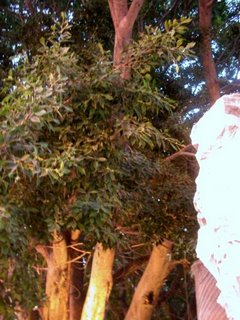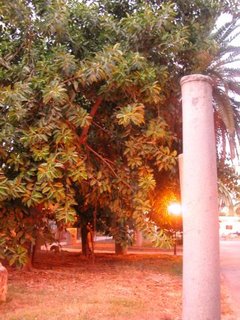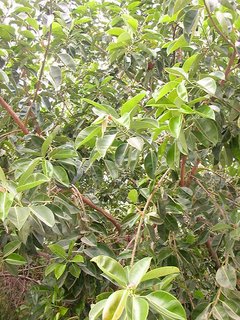I've written on the subject before, and I'm planning to do so again and as much as it takes, until the end of times, Amen. It's about my "Ficus Foundation", or however it translates from Arabic. And I do have a point, of course.
This love story began, as all love stories begin, in Rawshe, Beirut, 4 years in the past. Until that day, I always saw ficus trees as Damascean-balcony-filling-decorative-thingy. That day I saw them, 2 twin giant ficus trees near the old lighthouse, filling everything with their rubber green, sublime, really. From that day I made a point in noticing them. From the shadows.
I have piled up some useful information about my beloved ones, information which I didn't hesitate telling whenever asked, of course. Which brought me the "Ficus Militant" attribute. But let me talk about them a bit, and leave the images do the rest.
Ficus Trees, ficus elastica, also known as rubber fig, rubber plant or Sumatran rubber tree, is originar from Indian Assam region and Indonesian Sumatra and Java islands. Part of the fig family, or genus, banyan subgenus, extremely resistant to even the strangest of weather conditions, an interesting piece of research subject. A wild unattended ficus can literally fill all space surrounding it, leaving it, well, full of ficus. The botanical equivalent of legendary Lernaean Hydra, ie cut one leaf and expect 10 to grow in it's place.
An interesting fact about ficus trees is that when adequate conditions for development of seeds are found (which in case of rubber tree represent 95% of conditions), plant starts growing like crazy, most of the times as epiphytic, meaning that you have ficus growing over ficus. Thus the larger specimens are actually entire colonies of ficus trees fused together over time. A whole forest in one. Can't lose opportunity, once in a lifetime offer.
The giants below are Sumatrans and Indian figs. None of them reached 100 yet. Think about it.
This love story began, as all love stories begin, in Rawshe, Beirut, 4 years in the past. Until that day, I always saw ficus trees as Damascean-balcony-filling-decorative-thingy. That day I saw them, 2 twin giant ficus trees near the old lighthouse, filling everything with their rubber green, sublime, really. From that day I made a point in noticing them. From the shadows.
I have piled up some useful information about my beloved ones, information which I didn't hesitate telling whenever asked, of course. Which brought me the "Ficus Militant" attribute. But let me talk about them a bit, and leave the images do the rest.
Ficus Trees, ficus elastica, also known as rubber fig, rubber plant or Sumatran rubber tree, is originar from Indian Assam region and Indonesian Sumatra and Java islands. Part of the fig family, or genus, banyan subgenus, extremely resistant to even the strangest of weather conditions, an interesting piece of research subject. A wild unattended ficus can literally fill all space surrounding it, leaving it, well, full of ficus. The botanical equivalent of legendary Lernaean Hydra, ie cut one leaf and expect 10 to grow in it's place.
An interesting fact about ficus trees is that when adequate conditions for development of seeds are found (which in case of rubber tree represent 95% of conditions), plant starts growing like crazy, most of the times as epiphytic, meaning that you have ficus growing over ficus. Thus the larger specimens are actually entire colonies of ficus trees fused together over time. A whole forest in one. Can't lose opportunity, once in a lifetime offer.
The giants below are Sumatrans and Indian figs. None of them reached 100 yet. Think about it.








|